Abstract
IgE protein and grass-specific IgE antibodies were detected in the supernatants of 7-day cultures of unstimulated and pokeweed mitogen (PWM) stimulated human blood mononuclear cells from non-atopic and grass pollen-sensitive individuals. Significant amounts of IgE protein were detected in culture supernatants of grass-sensitive individuals and, even at lower levels, in those of non-atopic subjects. In contrast, detectable amounts of grass-specific antibodies were found only in the culture supernatants of grass-sensitive subjects. The mean values of total and grass-specific IgE detected in the supernatants of unstimulated and PWM-stimulated cultures did not differ statistically. Time sequence studies showed that IgE concentrations, measured in the 7-day supernatants, were due to a continuous release from the cells of IgE quantities progressively decreasing up to days 7 or 8. Comparison of the IgE protein and IgE antibody found in the 7-day culture supernatants to those released from initial cell pellets by treatment with acid buffer or freezing and thawing, showed that the IgE detected in 7-day supernatants could result, in part, from the release of cytophilic IgE bound to basophil or other cell types and in part also from the release of preformed lymphocyte cytoplasmic IgE into the supernatant fluids during the course of culture. In most non-atopic subjects and in some grass-sensitive patients the preformed IgE accounted virtually for the total IgE detected in the 7-day culture supernatants. However, the increase of IgE above the levels measured in the initial cell pellets, which was found in most grass-sensitive subjects, clearly reflected newly synthesized IgE. Both cycloheximide and puromycin were capable of reducing significantly the IgE concentration in culture supernatants when it was greater than the amount found in the initial cell pellets. The treatment of cells with mitomycin C was also able to decrease significantly the amount of IgE released in the supernatant after day 3 of culture.
Full text
PDF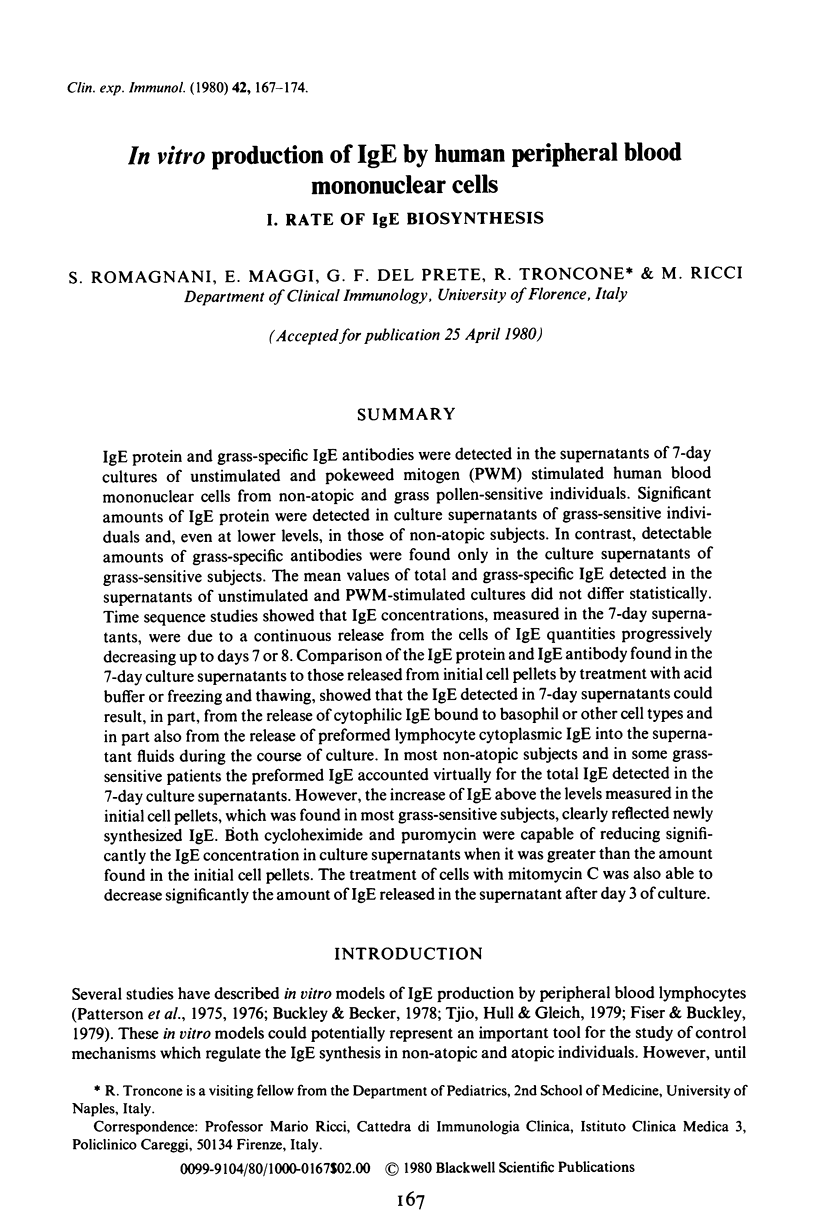
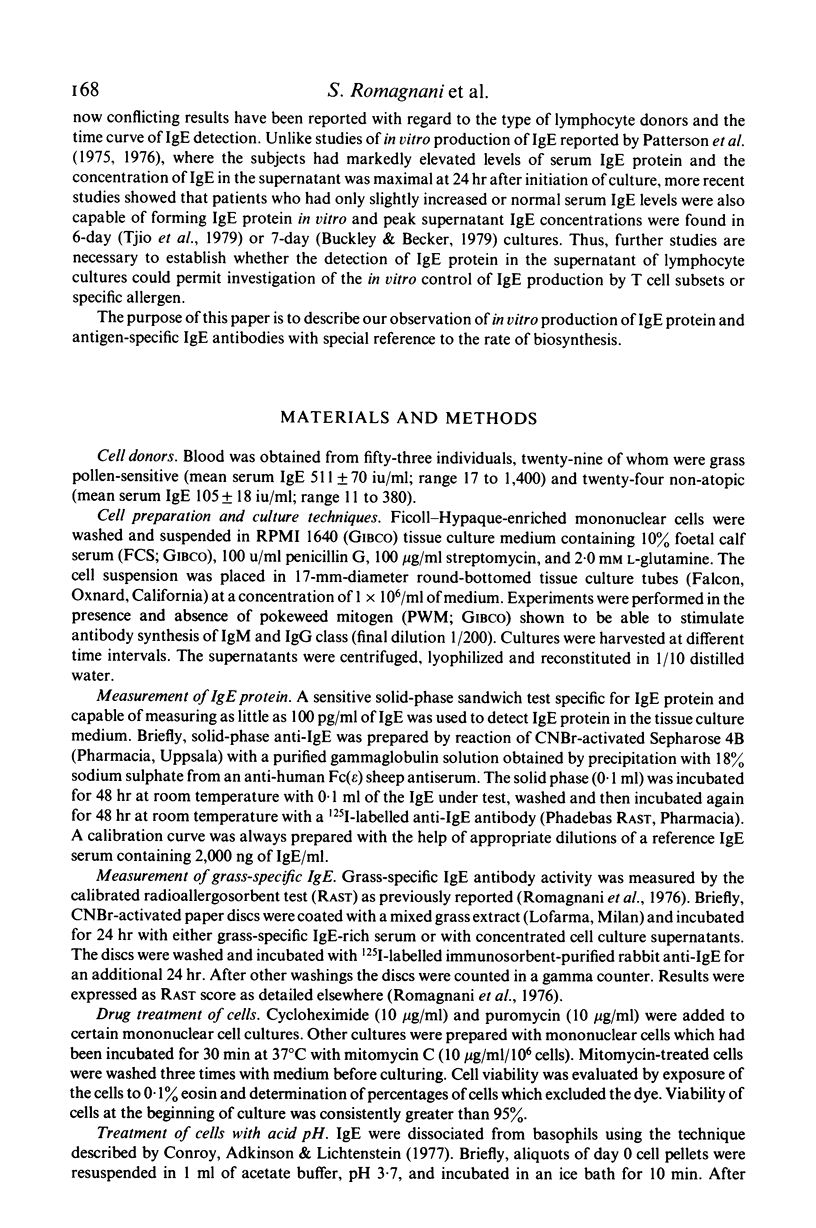
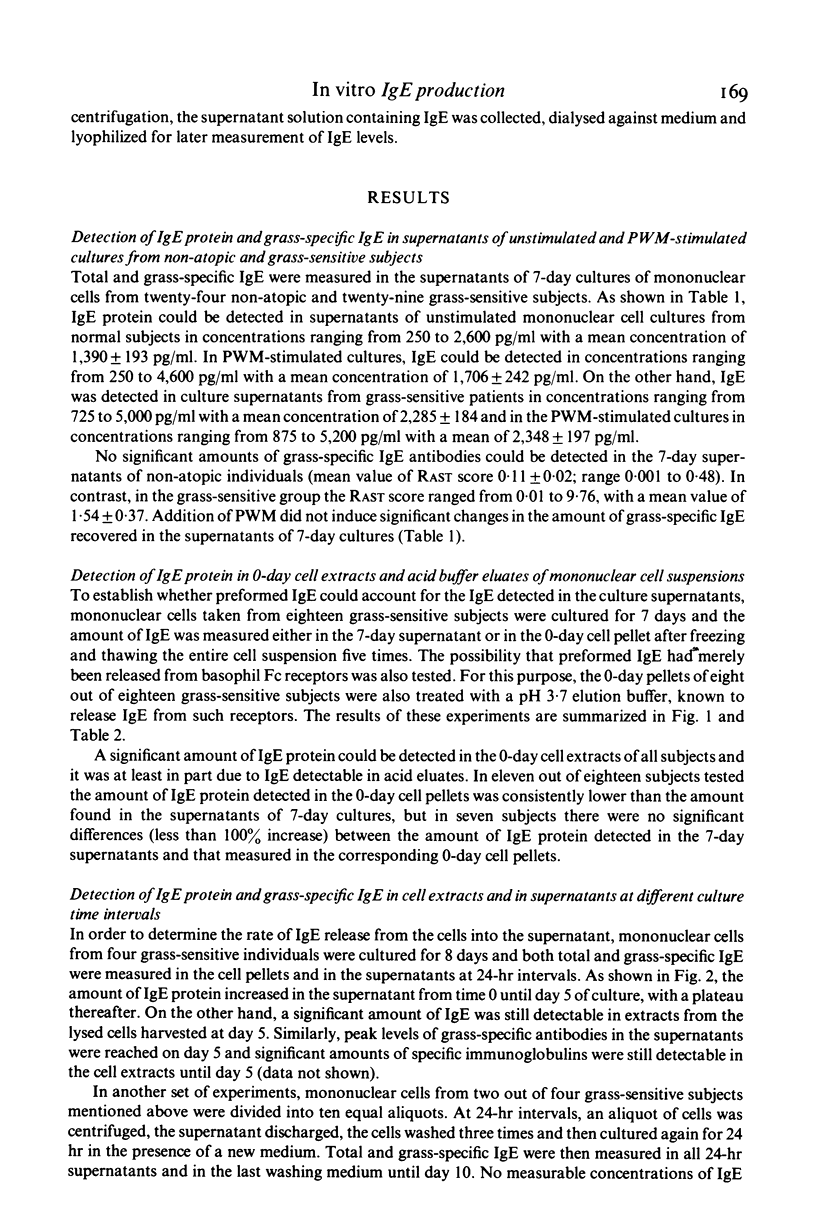
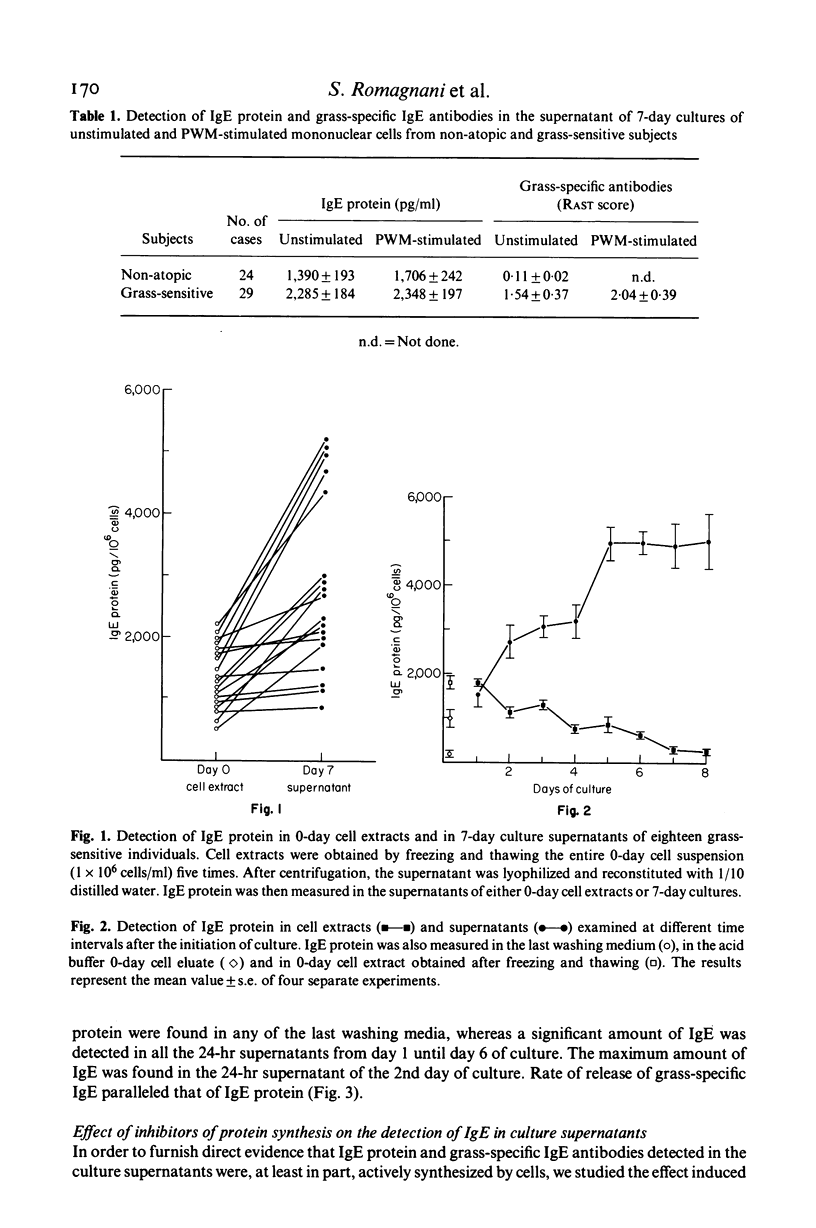
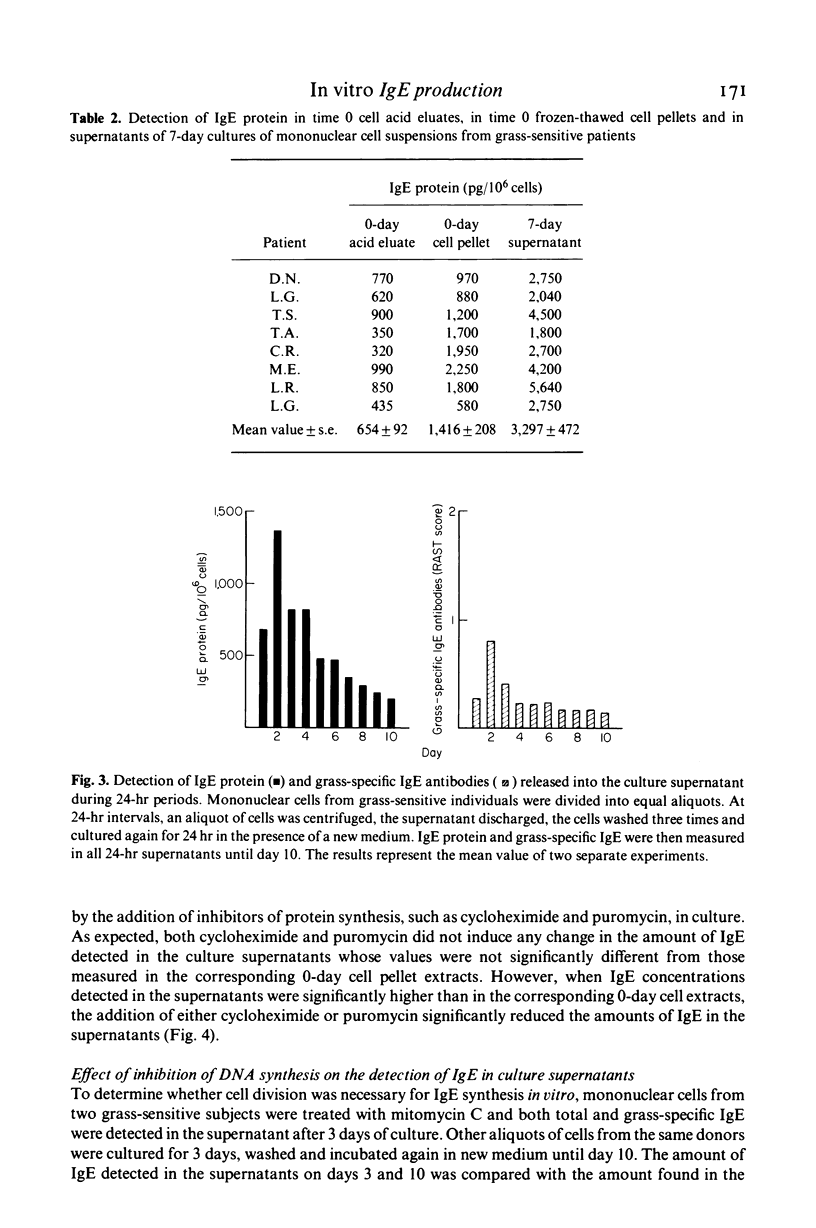
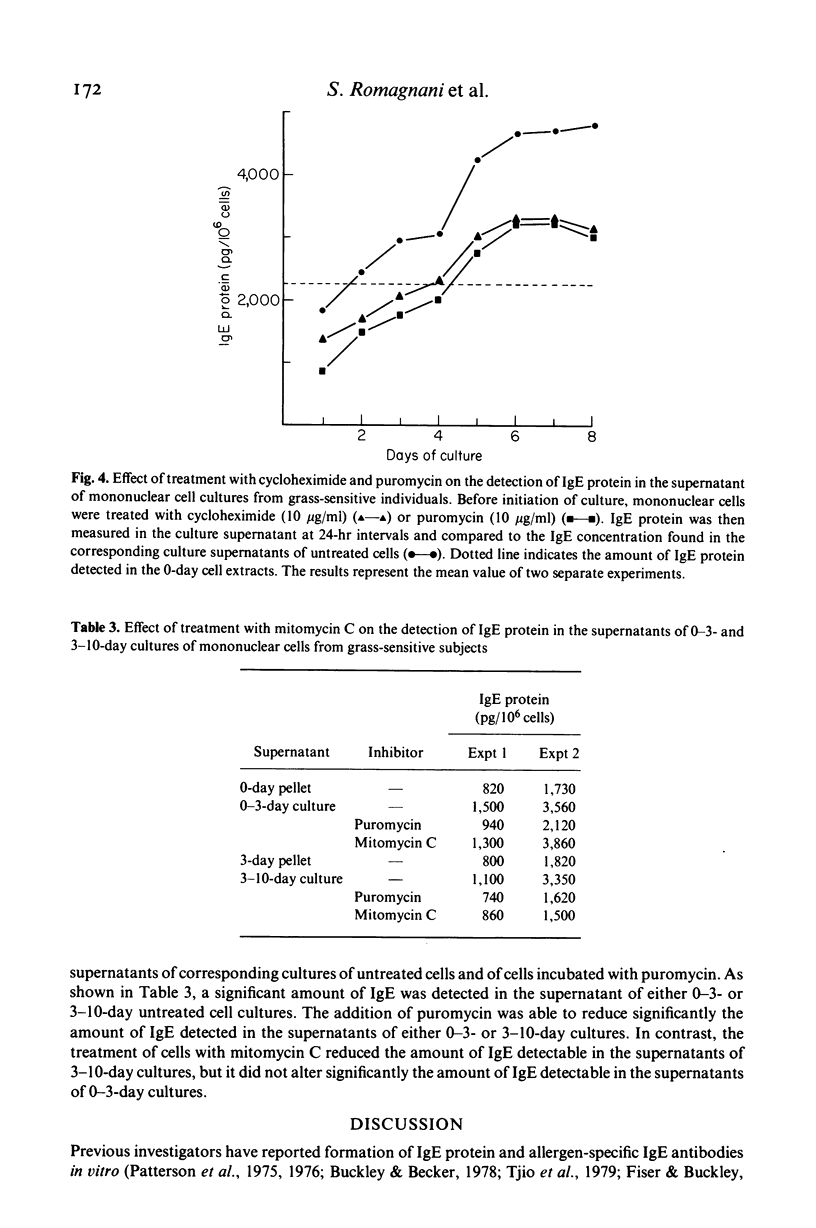
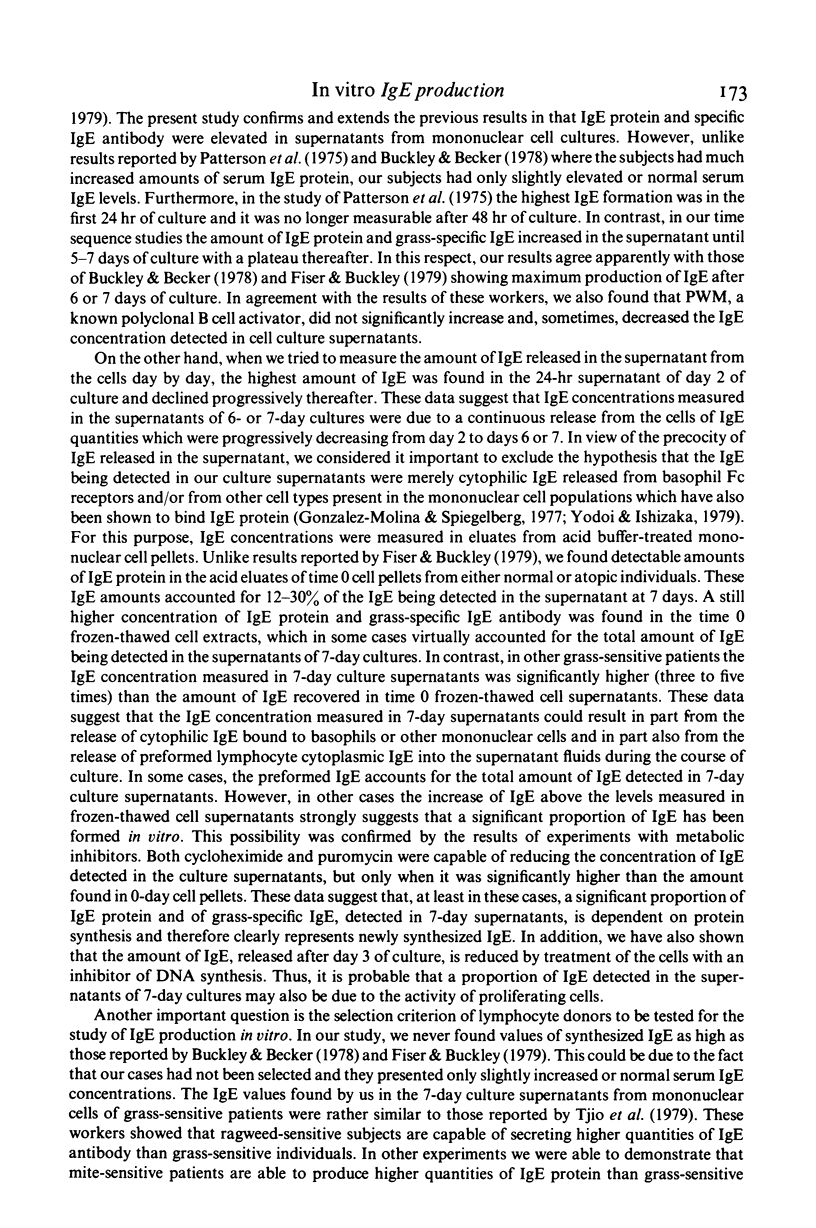
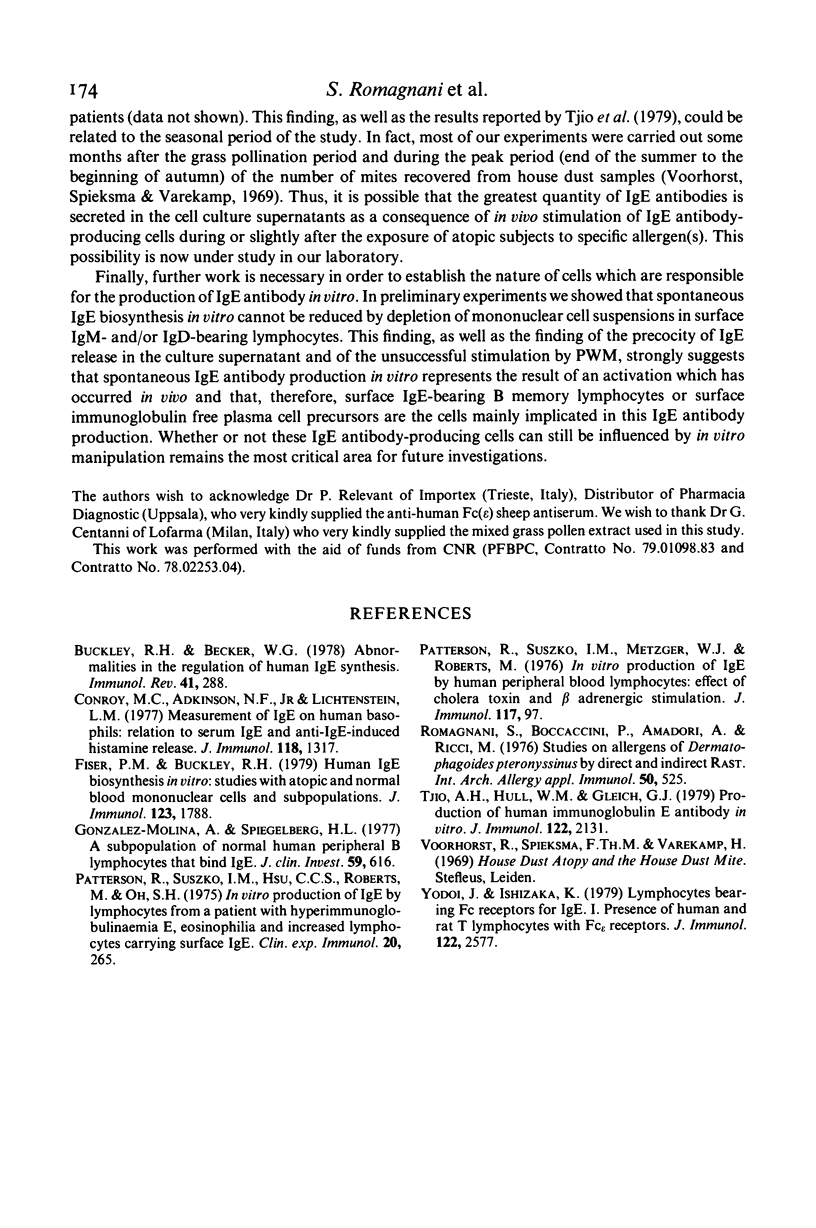
Selected References
These references are in PubMed. This may not be the complete list of references from this article.
- Buckley R. H., Becker W. G. Abnormalities in the regulation of human IgE synthesis. Immunol Rev. 1978;41:288–314. doi: 10.1111/j.1600-065x.1978.tb01469.x. [DOI] [PubMed] [Google Scholar]
- Conroy M. C., Adkinson N. F., Jr, lichtenstein L. M. Measurement of IgE on human basophils: relation to serum IgE and anti-IgE-induced histamine release. J Immunol. 1977 Apr;118(4):1317–1321. [PubMed] [Google Scholar]
- Fiser P. M., Buckley R. H. Human IgE biosynthesis in vitro: studies with atopic and normal blood mononuclear cells and subpopulations. J Immunol. 1979 Oct;123(4):1788–1794. [PubMed] [Google Scholar]
- Gonzalez-Molina A., Spiegelberg H. L. A subpopulation of normal human peripheral B lymphcytes that bind IgE. J Clin Invest. 1977 Apr;59(4):616–624. doi: 10.1172/JCI108679. [DOI] [PMC free article] [PubMed] [Google Scholar]
- Patterson R., Suszko I. M., Hsu C. C., Roberts M., Oh S. H. In vitro production of IgE by lymphocytes from a patient with hyperimmunoglobulinaemia E, eosinophilia and increased lymphocytes carrying surface IgE. Clin Exp Immunol. 1975 May;20(2):265–272. [PMC free article] [PubMed] [Google Scholar]
- Patterson R., Suszko I. M., Metzger W. J., Roberts M. In vitro production of IgE by human peripheral blood lymphocytes: effect of cholera toxin and beta adrenergic stimulation. J Immunol. 1976 Jul;117(1):97–101. [PubMed] [Google Scholar]
- Romagnani S., Boccaccini P., Amadori A., Ricci M. Studies on allergens of Dermatophagoides pteronyssinus by direct and indirect RAST. Int Arch Allergy Appl Immunol. 1976;50(5):525–535. doi: 10.1159/000231557. [DOI] [PubMed] [Google Scholar]
- Tjio A. H., Hull W. M., Gleich G. J. Production of human immunoglobulin E antibody in vitro. J Immunol. 1979 May;122(5):2131–2133. [PubMed] [Google Scholar]
- Yodoi J., Ishizaka K. Lymphocytes bearing Fc receptors for IgE. I. Presence of human and rat T lymphocytes with Fc epsilon receptors. J Immunol. 1979 Jun;122(6):2577–2583. [PubMed] [Google Scholar]


